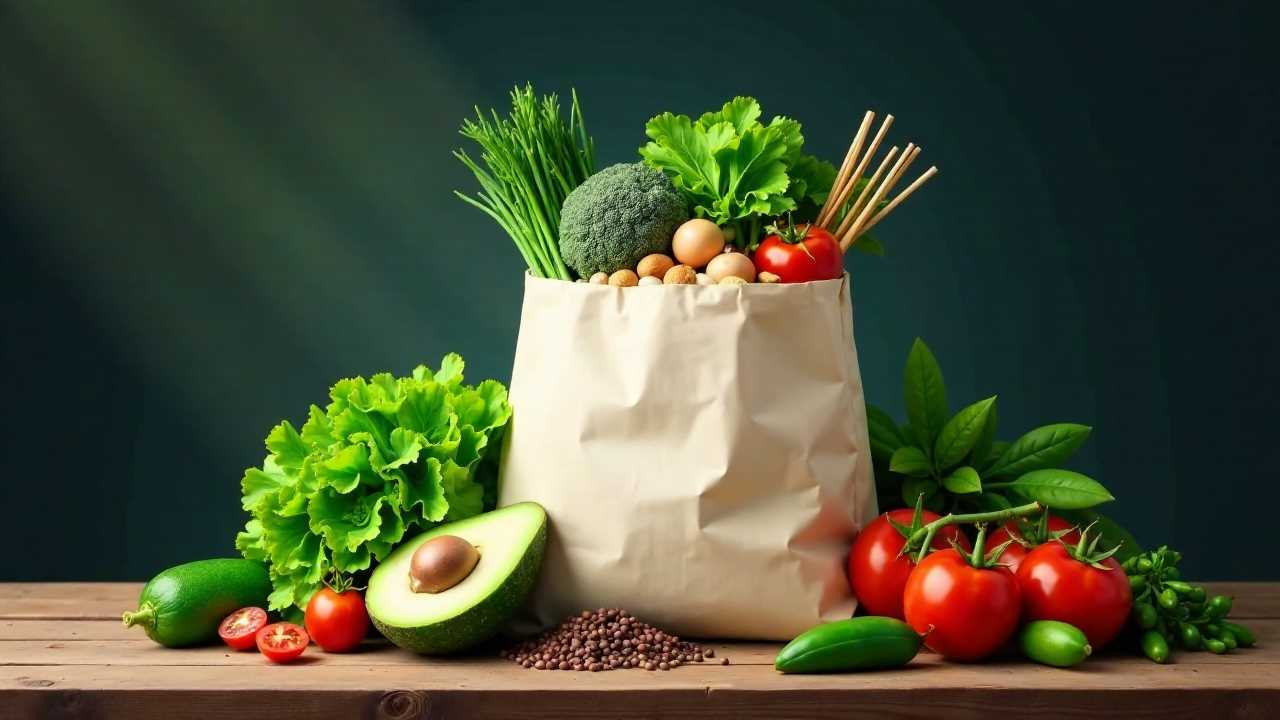
In today's world, sustainability has become a crucial aspect of our lives, and our meals are no exception. We understand the importance of making our meals more sustainable, not only for our health but also for the environment. In this comprehensive guide, we will explore various ways to make our meals more sustainable, focusing on ingredients, recipes, preparation methods, nutrition, and the importance of seasonal and local produce.
Choosing Sustainable Ingredients
The foundation of sustainable meals lies in the ingredients we choose. We can start by opting for organic produce, which is grown without harmful pesticides and chemicals. Organic farming practices are generally more environmentally friendly and help preserve soil health.
Another crucial aspect is selecting plant-based proteins. Legumes, nuts, and seeds are excellent sources of protein that have a lower environmental impact compared to animal-based proteins. We can incorporate these into our meals more frequently, reducing our reliance on meat and dairy products.
When we do choose animal products, we should opt for those from sustainable sources. Look for labels such as "grass-fed," "free-range," or "pasture-raised" when purchasing meat, eggs, or dairy products. These farming practices are generally more humane and have a lower environmental impact.
Crafting Sustainable Recipes
Creating sustainable recipes involves more than just using eco-friendly ingredients. We need to consider the overall impact of our meal preparation and consumption. Here are some tips for crafting sustainable recipes:
1. Use whole ingredients: Minimize processed foods in your recipes. Whole ingredients are often less resource-intensive to produce and have a lower carbon footprint.
2. Embrace plant-based meals: Try incorporating more vegetarian and vegan recipes into your meal rotation. Plant-based meals generally have a lower environmental impact than those centered around animal products.
3. Utilize leftovers: Create recipes that make use of leftover ingredients to reduce food waste. For example, vegetable scraps can be used to make homemade stock, and overripe fruits can be turned into smoothies or baked goods.
4. Practice portion control: Prepare appropriate serving sizes to avoid overconsumption and reduce food waste.
Sustainable Meal Preparation
The way we prepare our meals can significantly impact their sustainability. Here are some preparation techniques to consider:
1. Energy-efficient cooking: Use energy-efficient appliances and cooking methods. For example, pressure cookers and slow cookers can be more energy-efficient than traditional ovens for certain dishes.
2. Water conservation: Be mindful of water usage during food preparation. Use a bowl of water to wash vegetables instead of running water, and save pasta cooking water for watering plants.
3. Batch cooking: Prepare larger quantities of food at once to save energy and time. This can also help reduce food waste by ensuring leftovers are consumed.
4. Proper food storage: Store ingredients and leftovers properly to extend their shelf life and reduce waste. Use reusable containers instead of single-use plastic bags or wrap.
Nutrition and Sustainability
Sustainable meals should not only be environmentally friendly but also nutritionally balanced. We can achieve this by:
1. Incorporating a variety of fruits and vegetables: This ensures a wide range of nutrients and supports biodiversity in farming.
2. Choosing whole grains: Opt for whole grains like brown rice, quinoa, and whole wheat pasta, which are more nutritious and often require less processing than refined grains.
3. Balancing macronutrients: Ensure your meals contain a good balance of carbohydrates, proteins, and healthy fats from sustainable sources.
4. Minimizing added sugars and unhealthy fats: These often come from heavily processed foods, which are less sustainable and nutritious.
Embracing Seasonal and Local Produce
One of the most effective ways to make our meals more sustainable is by focusing on seasonal and local produce. Here's why:
1. Reduced transportation: Local produce doesn't have to travel long distances, reducing the carbon footprint associated with transportation.
2. Fresher ingredients: Seasonal, local produce is often fresher and more flavorful, as it doesn't require long storage or artificial ripening.
3. Support for local economy: Buying local supports local farmers and strengthens the local food system.
4. Increased biodiversity: Eating seasonally encourages crop rotation and biodiversity in local farming practices.
To incorporate more seasonal and local produce into our meals, we can:
1. Visit farmers' markets: These are great places to find fresh, local produce and connect with local farmers.
2. Join a Community Supported Agriculture (CSA) program: This allows us to receive regular deliveries of fresh, local produce directly from farmers.
3. Grow our own food: Even small herb gardens or vegetable patches can provide fresh, sustainable ingredients for our meals.
4. Learn about seasonal produce: Familiarize ourselves with what grows in our region during different seasons and plan our meals accordingly.
By implementing these strategies, we can significantly increase the sustainability of our meals. It's important to remember that every small change counts, and we don't need to transform our eating habits overnight. Starting with a few sustainable practices and gradually incorporating more over time can lead to a significant positive impact on both our health and the environment.
As we continue on this journey towards more sustainable meals, we'll likely discover new and innovative ways to reduce our environmental impact while enjoying delicious, nutritious food. The key is to stay informed, be creative, and remain committed to making conscious choices about what we eat and how we prepare our meals.
 Family Craft ProjectsHome ImprovementCooking and BakingReuse and RecycleDIY GiftsEco-Friendly ProjectsDIY Home SolutionsSeasonal ActivitiesFun and GamesLearn TogetherPrivacy PolicyTerms And Conditions
Family Craft ProjectsHome ImprovementCooking and BakingReuse and RecycleDIY GiftsEco-Friendly ProjectsDIY Home SolutionsSeasonal ActivitiesFun and GamesLearn TogetherPrivacy PolicyTerms And Conditions
